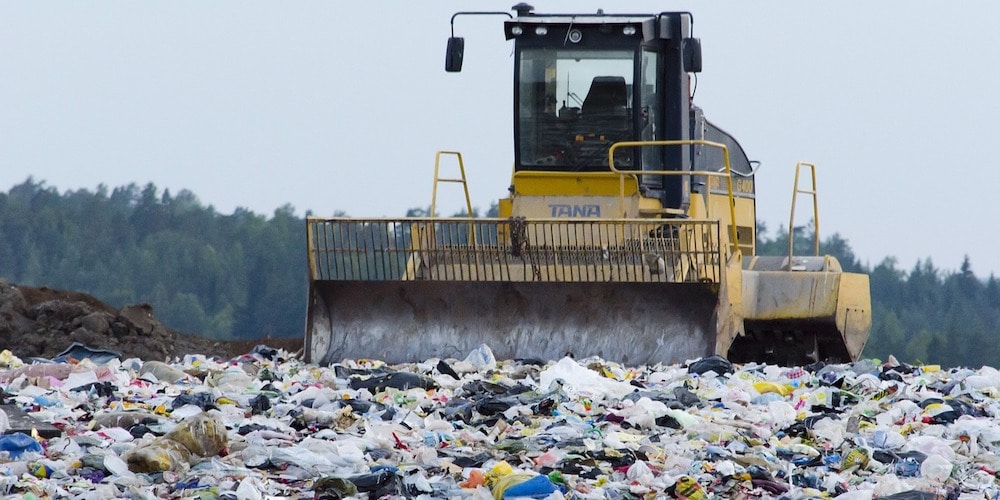Neil Seldman, Director, Waste to Wealth Initiative, Institute for Local Self-Reliance
If you read accounts of recycling in the mass media you may be convinced that recycling is on its deathbed after a 45 year run. Reality is more complex and more encouraging.
Recycling is not dying. The recycling movement born in the late 1960’s and joined by the anti garbage incineration movement in the late 1970’s has captured the hearts and minds of the US public and it is not losing ground. What is challenging is the recycling model offered by consolidated garbage hauling companies. Actual recycling is about to get a big stimulus from the recent restrictions on exporting materials to China. Recycling is reacting to a crisis that is not of its own making but for which it has solutions.
Here is what happened. Around Earth Day 1970 grass roots recycling started with drop off centers, then community based curbside collection enterprises were formed. By the mid 1980s these were subsumed by municipal agencies. Dual stream recycling was universal. Paper was collected separately from the mix of metal, plastic and glass which generated clean easy to sort materials. It brought the country steady increases in recycling rates through the early 2000s when the national recycling rate hit 34%. Some cities of course continue to grow their recycling to 50%, 60% and even 70% levels. By 2007 this dual stream based system supported 56,000 businesses, over one million jobs and accounted for billions of dollars of $37 billion in wages, $6 billion tax revenue and $236 billion in gross annual sales.
After starting the country on the road to recycling grass roots campaigners worked with business and elected officials to pass a passel of new rules — mandatory recycling and composting for households and businesses, minimum content for manufacturers, unit pricing for garbage collection, incentives for backyard and community scale composting, bans of hard to recycle packaging, industrial parks for recycling companies, — which made recycling a national undertaking for tackling economic, environmental and social problems, such as recidivism and the digital divide.
Concentrated waste hauling firms had to adhere to these new rules to maintain market share, profits and political influence. They did so by arrogating the recycling system for their needs not the public good. They introduced single stream recycling – mixing all materials together in one cart. This required massive processing plants, ((900 tons per day) to handle the mixed and crushed materials, which proved impossible for glass recovery and recovery of other clean materials. Residuals reached 30%. Processing plants were located 40-50 miles form cities adding transportation costs. Single stream systems went from 10% of cities in the US in the 1990s to 75% in 2010. Participation went up but recycling minus contamination and process residues did not. The national recycling rate stagnated at 34% for the last decade.
The only market for this material was China, which accepted the contamination until 2017 because of increased labor costs and industrial policy. The cut off of garbage-contaminated recyclables shocked single stream recycling even though it was given 4 years to prepare. The Green Fence was announced in 2013 and the final National Sword was varied out in December of 2017.
This is not a problem for companies that control most of the US landfill capacity as they earn 60-70% profits on landfilling and marginal if any profits on recycling. The price of processing recyclables increased to $100-$120 per ton, leading to more materials going to landfills
Cities and small haulers are now in a price squeeze with recycling and landfilling prices rising.
US cities can end this waste knot by increase recycling, creating jobs, reducing their environmental burden and lowering costs. There are four major steps that lead to a fifth.
- Localize the recycling system by reverting to dual stream for easy processing and quality materials for domestic markets; or stick with single stream but use properly scaled single stream processing (200-300 tons per day) that recovers clean materials including glass. Eureka Recycling in Twin Cities, MN uses single stream processing and sells 90% of materials in state.
- Focus on distributed composting including backyard and community scale programs and citywide facilities (scaled at 200-300 tons per day). Composting brings jobs, water conservation and locally produced food.
- Implement unit pricing that can reduce the waste stream by 40% through changed purchasing habits and increased recycling and composting. Worcester, MA has saved $100 million in avoided costs as a result of unit pricing. Cost avoidance is worth far more that revenue from sale of recyclables.
- Impose a surcharge on all garbage disposed on in landfills or incinerators in a county, thereby accumulating infrastructure investment capital. Alameda County, CA raises $10 million annually from such a surcharge that is invested in public, private and community enterprises and programs. Champaign, IL and Boulder, CO used surcharges to build their initial recycling infrastructure decades ago.
- Plan for a resource recovery park or industrial park for recycling composting and reuse companies. These pars keep value added from processing and manufacturing local. California has 39 such parks, which offer economic incentives for commentaries to locate. Austin, TX and Alachua County, FL are building their own parks.
Cities can take advantage of the curious market that the Chinese cut off has created. There is a scramble for materials in the US waste stream. Chinese companies are the leading investors in US paper, plastic and electronic recycling facilities to process materials and send fiber, pellets and parts to their home county. US companies are also investing in recycling: 17 new paper mills will be on line in 2 years and plastic firms started to pelletize plastic for domestic reuse.
The prospect of a recycling system based on local processing and regional end markets is at hand. Public and private investment is flowing. Cities need to channel this capital into the proper infrastructure and market development.

